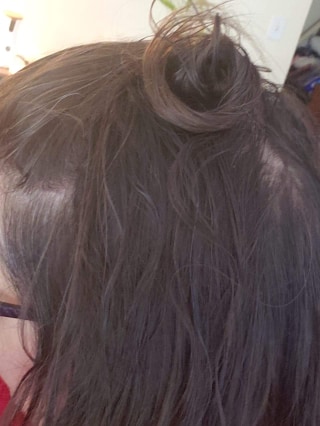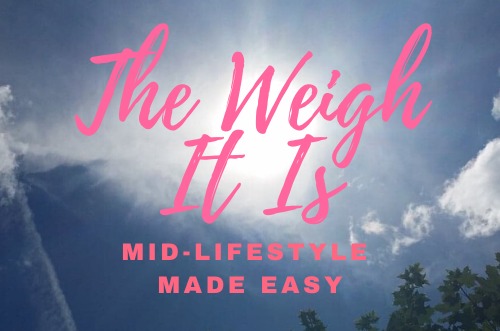
Are you noticing your drain has more hair in it than usual? Does your brush need to be cleaned more often than it used to? Are you finding more hair on your shoulders than ever before? These are the unmistakable signs of hair loss. Eventually you will notice that you can wrap the elastic around your ponytail an extra time or that you can see more of your scalp than you used to. But what do you do? There are many causes of hair thinning, but one of the most significant is damaged hair and breakage. I went searching for ways of preventing damage and hair loss.
How do I prevent damaged hair?
There are a number of ways to help with damaged hair, but it is best to start with your hair washing methods. I used to think I was doing all of the best things to prevent excessive damage to my hair, but it turns out that I was missing one key factor. I was washing my hair all wrong! There is an outer layer on each hair strand called the cuticle. This cuticle is the protective layer for your hair. If it gets damaged it cannot be repaired. Once damaged, the hair strands are prone to breakage. Because of this, it is vital that your hair care ritual includes preserving the cuticle.
Hair Washing Steps for Preventing Damage and Hair Loss:
I am neither a nutritionist, a dietitian nor medical professional. The information in this article has been researched and sourced at the end of the post if required. All medical issues or questions regarding your health or symptoms should always be brought to the attention of a medical professional for clarification, assessment, advice and treatment.
Choosing the Best Shampoo:
Using a shampoo with a lot of additives and chemicals can do significant damage to your hair. By using these abrasive cleansers on your hair you are damaging the cuticle and leaving it more vulnerable to the effects of drying and styling, as well as the elements including sun, heat and cold.
The best shampoo choice should be all natural. I was surprised to find that there are natural and organic shampoos that are formulated to address specific needs. Do you have fine hair, frizzy hair or dry hair? There are natural shampoos out there to address all of these issues.
If you would rather use a more commercial product, it is best to choose a brand that contains less than 5.5 PH level. The higher the PH level, the more damage is being done to your hair. Some people think that using a baby shampoo would be gentler on your hair. Unfortunately, the additives that they use to make the shampoo gentle on baby’s eyes also increases the PH level to 7.0. This keeps the shampoo from hurting if it gets in your baby’s eyes, but also makes it excessively hard on the hair, itself.
This post may contain affiliate links. Although we may make a small commission it is at no cost to you. See “Disclosure and Legal Things” section for complete details.
Some people opt to make their own hair cleaning products. There are a number of homemade shampoo recipes out there, including some that use vinegar, baking soda, coconut oil or even dish soap. If you decide to try one of these recipes, you should know that baking soda can also have a damaging effect on the cuticle. Investigate the recipe and the effects of the ingredients that you are using and decide which ones are the best options for your hair.
How to Apply the Shampoo to Your Hair
I always thought I was supposed to use a lot of shampoo. I would rub it in well from scalp to tip. Then I would let it sit to get all the best benefits that were promised on the bottle. As it turns out, this was all wrong! Here is what I have discovered is the best way to wash your hair to keep it healthy while preventing damage and hair loss.
Start with tepid water and not the hot water you use to shower. Turn your head upside down or lean back so that your hair is falling away from you. This allows for better access to your scalp. Once your hair is wet, add a small amount of natural shampoo to your palm, about an inch in diameter. No need to use a lot. Mix in a little bit of water and lather up. Apply the shampoo to the scalp and top of your hair. It’s best not to apply it to the entire length and ends of your hair. The shampoo is hard on the cuticle but is great for the scalp, so it is best to only apply it where it has the most benefit.
Massage the scalp gently with the tips of your fingers. Avoid using your nails when rubbing the shampoo on your head. Your nails can infect the scalp and/or damage the hair follicles. Once they are damaged it stunts hair growth. Leave the shampoo in for a maximum of 3 minutes and rinse with cold water. The cold water helps to keep the cuticle in good repair and closes the pores in the scalp.
How to Apply Conditioner to Your Hair
Conditioner, unlike shampoo, should not be applied to the scalp as it has the scalp has natural oils and does not need any extra. The purpose of conditioner is to prevent further damage to the cuticle and to protect the hair against hair dryers, heat styling products and natural elements.
Start with wet (not soaking) hair. Put some conditioner in the palm of your hand. For medium length hair use a dab about the size of a quarter. Use more or less according to your hair length. If your hair feels heavy or weighed down, reduce the amount. Apply the conditioner to the middle and ends of your hair and work through without twisting or wringing your hair. Leave in for 3 to 5 minutes. Some people prefer to run a wide toothed comb through the hair while the conditioner is in it. It is thought that this helps the conditioner to reach all areas of the hair. Do not tug or pull. Work from the ends up to avoid tearing or breaking. Finally, rinse with cold water.
Now that your hair has been cleaned and conditioned, there are some final steps to help prevent damage, breakage and hair loss.
How to Dry Your Hair
The best way to dry your hair is to let it dry naturally. This can be time consuming and may not always be possible, but it is completely natural and has no compromising effects. You can use a wide toothed comb to remove any tangles. Just as you would when the conditioner is in, start from the ends, removing any tangles, and move upward until the hair is smooth. Let it dry.
If you feel the need to towel dry your hair, be sure to avoid excessive rubbing. This can cause the hair strands to rub together, resulting in damage to the cuticle and ultimately, breakage.
In either case, refrain from twisting or wringing the water out of your hair, as this too, can cause breakage.
Finally, if you must blow dry your hair, be sure to use a blow dryer that has a variety of heat settings. The thicker your hair, the more heat can be used, however it is never a good idea to overheat your hair. Separate your hair into sections and dry one section at a time. Avoid going over the same area repeatedly as you will overheat the already dried area. When your hair is dry, you should put the setting on cool to reduce the temperature of the hair. This keeps the hair smooth.
This all sounds like a lot, but basically it comes down to this.
- Wet hair with tepid water.
- Shampoo from the scalp down halfway using a natural shampoo that has a PH level below 5.5.
- Rinse with cold water.
- Add conditioner from the middle to the ends of your hair. Comb through from the ends up using a wide toothed comb if desired.
- Rinse with cold water.
- Air dry if possible. Towel dry if you prefer. If necessary, blow dry at coolest temperature and finish with cool air.
